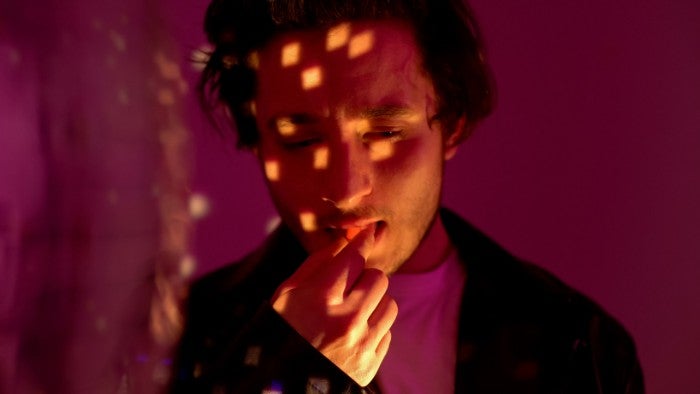

Medically reviewed by Giordano Novak, University of São Paulo on April 3rd 2022
Have you ever wondered who actually made LSD famous? Or who has talked about the popular drug?? Well, we have done some research and wanted to share with you the people responsible for this powerful drug’s widespread popularity.
It began in 1943 when Swiss chemist Albert Hofmann synthesized lysergic acid diethylamide (LSD) from ergotamine. His discovery of its psychedelic effects five years later on April 16, 1943 (LSD Day) led him to become known as the “Father of LSD.”
While his work was initially met with skepticism by other scientists, Hofmann went on to conduct numerous experiments which ultimately helped demonstrate that LSD can be used therapeutically.
In this guide, we will take a look at some of the other people who contributed to making LSD famous over the years, as well as the famous moments that helped fuel its popularity.
The history of LSD is an intriguing and COMPLEX one. LSD, or lysergic acid diethylamide, is a highly potent and powerful psychedelic drug first synthesized in 1938 by Swiss chemist Albert Hofmann [1].
While researching ergot alkaloids, Hofmann ACCIDENTLY ingested some LSD and experienced its mind-altering effects. In 1943, he published his work on LSD and continued to experiment with the drug throughout the 1950s and 60s.
His research ultimately opened up a new UNDERSTANDING of psychedelics and their potential therapeutic uses.
In the 1960s, many prominent figures began to ADVOCATE for the use of LSD in various settings. At the time, LSD was illegal and had yet to gain widespread acceptance.
These advocates included psychologist Timothy Leary, author [2] and philosopher Aldous Huxley [3], and a group of eminent psychiatrists at Harvard University’s Psychedelic Research Project.
Leary is perhaps the most famous advocate of LSD, and his advocacy led to it becoming POPULAR in mainstream culture. He was known for his famous mantra, “turn on, tune in, and drop out.”
This phrase encouraged others to EXPERIMENT with hallucinogenic drugs like LSD to explore states of altered consciousness.
LSD was also popularized by other influential figures, such as Beat poet Allen Ginsberg and psychologist Richard Alpert (later known as Ram Dass). These individuals helped spread the message that LSD could EXPAND consciousness and spiritually enlighten people.
The famous “acid tests” of the mid-1960s were another popular way for people to experiment with LSD and experience its effects. These events, organized by author Ken Kesey and his followers, encouraged participants to take synthesized LSD in a safe, comfortable environment.

Dr. Hofmann was a Swiss chemist who made LSD famous by being the first to synthesize and ingest it. He began his RESEARCH in 1938 when he was employed at Sandoz Laboratories in Basel, Switzerland.
His work initially focused on isolating compounds from ergot alkaloids that could be used as pharmaceuticals for TREATING migraines and circulatory disorders. In 1943, he published a paper about his discovery of lysergic acid diethylamide (LSD).
After accidentally ingesting some of the drugs five years later, Hofmann experienced its mind-altering effects (acid trip) and became known as “the Father of LSD.
He explains in his book, “LSD: My Problem Child” [4] that his life’s work was to EXPLORE the therapeutic potential of psychedelics and their ability to open up new states of consciousness.
He gave a first-hand experience to the world of what it is like to have an LSD experience. He helped to create a more INFORMED understanding of psychedelics and their potential for healing.
“In a dreamlike state, with eyes closed (I found the daylight to be unpleasantly glaring), I perceived an uninterrupted stream of fantastic pictures, extraordinary shapes with intense, kaleidoscopic play of colors.” With these words, Hofmann described his first LSD trip.
Throughout the 1950s and 60s, he conducted numerous EXPERIEMENTS with LSD, which helped demonstrate its therapeutic potential.
The Albert Hofmann Foundation was created in his honor and continues to promote awareness of the drug and its hallucinogenic effects.
Today, Dr. Hofmann has remembered as one of the most INFLUENTIAL figures in psychedelic history whose groundbreaking work paved the way for others to explore this powerful drug’s potential benefits.
Psychologist Timothy Leary and author Aldous Huxley helped make LSD famous. They wrote books and spoke about it to help people UNDERSTAND it better.
They also encouraged people to take LSD during the ’60s counterculture movement so that more people could experience the drug’s effects.
Leary was an OUTSPOKEN advocate for using LSD to expand consciousness and spiritual enlightenment. He famously coined the phrase “turn on, tune in, drop out,” encouraging people to abandon their social roles and explore new perspectives.
Huxley wrote several books about his experiences with mescaline and LSD, including The Doors of Perception and Heaven and Hell, which helped POPULARIZE the drug’s potential benefits.
Leary and Huxley helped spread the message that LSD could be a POWERFUL tool for spiritual exploration and personal growth. They played an important role in making LSD famous throughout the 1960s, and their influence continues to be felt today.
Pro Tip: All three of these figures had a major influence on making LSD famous. They helped inform people about its effects and encouraged experimentation.
The hippie culture of the 1960s embraced LSD as a powerful tool for spiritual exploration. Hippies used the drug to CHALLENGE traditional values and break down societal norms that had been in place for centuries.
Hippies believed that by taking psychedelic drugs like LSD, they could unlock HIGHER levels of consciousness and access alternate realms of understanding.
They also used the drug to connect with others in a DEEPER and more meaningful way, believing that it could bring people closer together.
This type of exploration was seen as revolutionary at the time and helped make LSD famous among counterculture enthusiasts all over the world.
Today, hippie culture is still associated with LSD, and many people continue to use the drug to EXPLORE their consciousness and connect with those around them.
Pro Tip: Drug abuse can have serious consequences. Always use LSD and other drugs responsibly.
LSD has been around since the 20th century, but it wasn’t until the 1960s that it became famous. Dr. Hofmann was the first to synthesize and ingest LSD, and his work laid the foundation for Timothy Leary and Aldous Huxley to popularize its therapeutic potential.
The hippie culture of the ’60s embraced LSD as a powerful tool for spiritual exploration, helping make it famous worldwide.
Today, this drug is still widely used for the same reasons, and its influence continues to be felt. Hopefully, future research can shed more light on the potential benefits of this powerful drug.
Subscribe and get $15 off your next order!
PRISMS LSD CANADA
Please note we have a new etransfer email. Please follow the details at checkout.
Dismiss